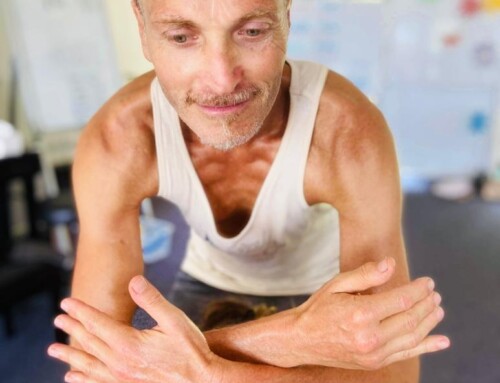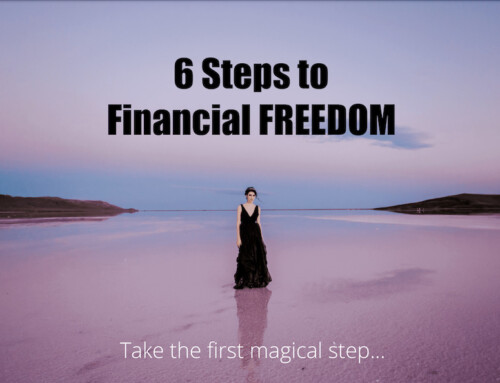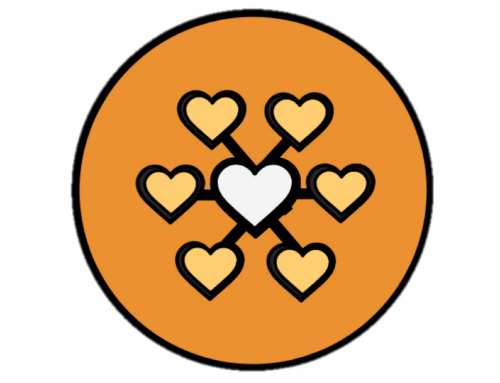When the plane touched down at Sydney airport, I breathed a huge sigh of relief! You would think that after flying between Sydney and London 10 times over the last three years, I would be used to long-haul travel. And I am, but that doesn’t mean that I enjoy it. For me, flying is a necessary evil and a technology that enables me to live the life I do today. This time, I was in London for the Wellbeing@Work London Conference. It was an awesome experience and well worth enduring the 22-hour flight, crossing 11 time-zones, swapping summer for winter and experiencing some of the worst jet lag I have ever experienced!
The 2019 Wellbeing@Work London conference attracted over 300 people from leading companies, a far cry from the first event I attended back in 2014 when I was just starting to learn about the concept of wellbeing@work.
My Journey to Workplace Wellbeing
Whilst I first got into Workplace Wellbeing in 2014, the journey really began a long time before that.
Growing up in the fluid world of publishing where disruption, change, uncertainty and constant restructuring was ‘business as usual’, I needed some kind of coping mechanism to manage and channel all of that mental stress. So I did what everyone else around me did. Worked hard throughout the day and then retreated with my colleagues to the pub post work where we drank copious amounts of alcohol and smoked packets of cigarettes whilst we discussed the ‘soap opera’ that we were part of, speculating about what would happen next. I always left with new perspectives and insights, and it was great fun. But it was also creating a lot of stress in my body and I knew intuitively that it wasn’t sustainable behaviour.
At that time, in the mid-90s, no one was talking about workplace wellbeing or mental health. It wasn’t a thing.
From Self Help to Personal Development
As they say: ‘when the student is ready, the teacher will come’, and the teacher actually came in the form of authors who had taken the time to share their learnings through the books that I was promoting! At the time, I was working for McGraw Hill, a trade, professional and academic book publisher back then. And amongst the 10k books they published, there was a whole range of personal development books. As Marketing Manager, it was my job to promote them which meant that I had to read them! How lucky I was, as those pages were full of practical suggestions and solutions which I started to incorporate into my daily habits. Out went the alcohol and the cigarettes and in their place came new more sustainable healthier habits.
The Wellness Movement
It wasn’t until 2006 that I stumbled across the more niche wellness movement that was starting to emerge. It all started by attending a talk on nutrition, an event I very nearly didn’t attend, but that talk challenged the very core of my belief system about food and led me to become a student of nutrition. To say that I was inspired by the personal stories that I read about is an understatement, but with awareness came action. I knew that I needed to clean up my diet to enable my body to be in the best condition to support my mind and my work, so I looked into the mirror of truth and decided to upgrade my food choices. I stop eating animal products and ultra-processed foods and starting eating a plant-based diet. This transition was not easy, and my body initially reacted very badly. I was in bed for a whole week with the worst flu ever! But following the storm, came the calm and then a huge surge of energy and clarity of mind that I had never before experienced. 14 years later, the ROI of that single decision has been exceptional.
The Road to Corporate Wellbeing
With my excess energy, I was keen to help my family, friends and colleagues, but struggled to articulate the benefits as my own level of expertise was still forming. At the time, I was the Global Marketing Director for RBI, a division of RELX. As a business case study, the RBI story is a fascinating one. RBI started life as a successful magazine business. The advertising pages were indeed lined with gold. However, nothing lasts forever, and when the Internet came along offering customers cheaper and more innovative ways to advertise, the magazine business started to change forever.
Between 2008 & 2014, RBI was forced to pivot its business model and then reinvent itself as a data, analytics and software company. If you have been involved in any kind of ‘transformation’, you’ll be aware that this is not a walk in the park. Successful and unsuccessful transformations of this nature bring with them a huge amount of risk, uncertainty, fear, stress and anxiety. They test everyone’s resilience, especially the leadership team who had to make tough decisions to keep the ship afloat. In the end, half of the business was sold and the cost base realigned to match the new revenue shape.
As Global Marketing Director with a large budget and a lot of staff, a great deal of my personal energy went into planning and executing the restructures. For me, on a personal level, this was immensely difficult and had I not had my own personal resilience and wellbeing toolkit in place, I would have struggled big time.
The RBI Living Well Philosophy
By 2014, the business was back into growth and the time was ripe to put wellbeing firmly on the agenda. The world of 2014 was very different from the world of 2008, with a number of things happening concurrently:
- The millennials were becoming a growing force and their values and expectations were very different from the previous generations.
- Wellbeing, especially mental wellbeing was starting to be talked about at board level.
- RBI introduced a people strategy to set the business up for accelerated scale and growth.
Board Support + Grassroots Passion = SUCCESS
With board support combined with grassroots passion, between 2014 and 2016, RBI Living Well took form and was externally recognised by the CIPD at the end of 2016 by winning the best corporate wellbeing programme on the back of some impressive stats. I collected the award in disbelief!
When I left RBI at the end of 2016 and moved to Australia, there was enough traction to ensure that RBI Living Well didn’t leave with me, but continued to evolve and grow supported by the Kamwell Team. Today wellbeing is very integrated into the culture with a wellness centre and ahead of wellbeing who has continued to build on top of its truly holistic and authentic roots.
Win, Win, Win, Win
Today, more broadly, workplace wellbeing, especially psychological health, is a big growth area. The 2019 Wellbeing@Work London conference attracted over 300 people from leading companies, quite different from the first event I attended in 2014. However, one thing that hasn’t changed at all is how I felt at the end of the conference. In 2014, Workplace Wellbeing was new to me. The concepts, the case studies, the people, all new. But by the end of the day, I left with a huge sense of excitement about what was possible, and how we could positively impact the lives of millions of people through the channel where they spend the most time, work.
I left the 2019 conference feeling exactly the same way. Together we can make a positive difference and create a more humanistic future of work where:
✔︎ Every employee has their own wellbeing and resilience toolkit
✔︎ Managers and individuals are sensitive to their personal and team mental and physical wellbeing
✔︎ We celebrate the richness that diversity can bring
✔︎ We value the knowledge and experience that more mature employees bring
✔︎ We use technologies and data to better understand how people are feeling and use these insights to enhance the employee and customer experience
✔︎ Psychological safety and welbeing@work is the norm, rather than the exception
✔︎ We are seeing meaningful improvement on Gallup’s employee engagement survey!
In short, we have much work to do to create positive workplaces that enable sustainable manager, employee, customer and business wellbeing – win/win/win/win.
Whose Responsibility Is It For Wellbeing?
A common question that is often asked is who’s responsibility is it for employee wellness & wellbeing? The employers or the employees?
Having worked in multiple businesses through literally every business cycle, my belief is that our personal health and wellbeing is no one’s responsibility but ours! Having said that, that does not mean that the business has no responsibility at all. It’s the responsibility of the leaders and managers of a business to create an environment that enables and makes it easier for employees to be well physically, mentally and emotionally.
What Can a Business Do?
Business is in a unique position to be able to positively influence the wellbeing of the employees, and here are a few things you can do that will have an impact on engagement, retention and performance:
- Focus on your own wellbeing as a priority, by taking responsibility for your own wellbeing, can you make sure that your employees do the same.
- Set a vision for the future of the business, underpinned with some strong values
- Communicate that vision regularly to help your people understand the course of travel. It’s so easy to lose sight of the bigger picture amongst the busyness of the day-to-day.
- Calculate the true cost of being ill in your organisation – recruitment, training and lost productivity are expensive!
- Conduct an audit to measure where best to place resources and what impact any programme is expected to have
- Train line managers to have the skills and confidence to manage team issues openly, sensitivity and effectively
- Recognise and acknowledge the work that people are doing
- Deliver tough messages with compassion
- Provide clarity on people’s roles and responsibilities
- Help an employee to map out a career path and personal growth plan
- Help employees feel more in control of their lives through the provision of flexible benefits
- Invest in tools that save time
- Provide mechanisms to receive feedback from employees and ensure all voices are heard
- Provide access to lifestyle education to empower employees with knowledge
- Provide easy and convenient access to good quality food
- Design offices in a way that optimises natural light and space
- Break down silos and create a community vibe by championing initiatives that bring people together
- Refrain from sending emails at weekends, use a ‘send later function’ if you are working on a Sunday afternoon!
- Insist that people don’t check email whilst on holiday
- Communicate clearly what support services employees have access to
What Can an Employee Do?
- Focus on your own wellbeing as a priority, it’s your life, your health, and your responsibility
- Bring your whole self to work and look for ways to bring your passions to the workplace
- Decide to upgrade your food choices to bring more nutrition into your body
- Prepare food at home if you’re working in an obesogenic work environment
- Take the time to eat and digest your food, eating on the run consistently may save you 15 minutes in the short-term, but will cost you a lot more down the line
- Drink less alcohol
- Move your body every day
- Make sure that your desk is set up correctly. Try to get a standing desk or a big box so you’re not sitting down all day
- Learn to meditate and practice twice a day, it will change your whole perspective
- Go to bed before 11pm and get plenty of rest so that you can show up at work in a big way
- Ask questions to get clarity on what’s expected of you
- Don’t allow others to impact how you feel. Only you decide how you feel
- Avoid negative colleagues if you can
- Become aware of your own internal voice, especially when things go wrong. It will impact your performance in a negative way! Replace it with an encouraging voice
- Use feedback mechanisms to share practical suggestions, recognising that your perspective is unique and no idea is a bad idea
- Commit to learning and growing your skills and knowledge
- Try to see things from other people’s perspectives as well as your own
- Go out into the fresh air several times a day, walk and talk phone meetings, or walk and talk in-person meetings can work wonders
Bringing It All Together
Work, what we do every day, is a huge part of our life. It defines us and can be a big source of wellbeing: financial, social, mental, emotional and physical. It can also be a big source of ill-being!
Research, as well as common sense, shows that eating poorly, sleeping poorly, and sitting down all day combined with a difficult boss, a massive workload and challenging clients is a recipe for a perfect storm.
But it doesn’t have to be that way.
With the right support around you, things can and will get better. We’re here to help you move towards a higher-performing culture, enabled through wellbeing whatever your starting position.
Two Ways We Can Help You:
- Join our wellbeing@work events that are now taking place in 11 cities around the world .I head up the APAC events and we’d love to see you. https://fowinsights.com/events/category/events/ Use code: RAW30 to get a discount of your ticket.
- Schedule a 30-minute free strategy session to understand where you are right now, where you’d like to go and whether I can help you get there faster! I work with business owners and department leaders to help you reframe the way you look at things and focus on moving towards personal, team, customer and business wellbeing. http://www.lawrencemitchell.co/coaching/
About RAW Energy
My personal wellbeing and resilience toolkit has now formed the basis of the RAW Energy approach. RAW Stands for resilience, authenticity and wellbeing – with energy as the output. Why are these things important?
◆ Resilience. Life and work are stressful, let’s face it. If we chose to work, run a business, have a partner, have kids, we are choosing stress, so the more resilient we are, the better we’re able to channel that stress.
◆ Authenticity is all about understanding who you are and to be who you so that you can put yourself in the right environment to enable you to thrive..
◆ Wellbeing is all about being in balance or in harmony. I see positive energy as the outcome of wellbeing and we have 6 types of energies that are all.See more.







